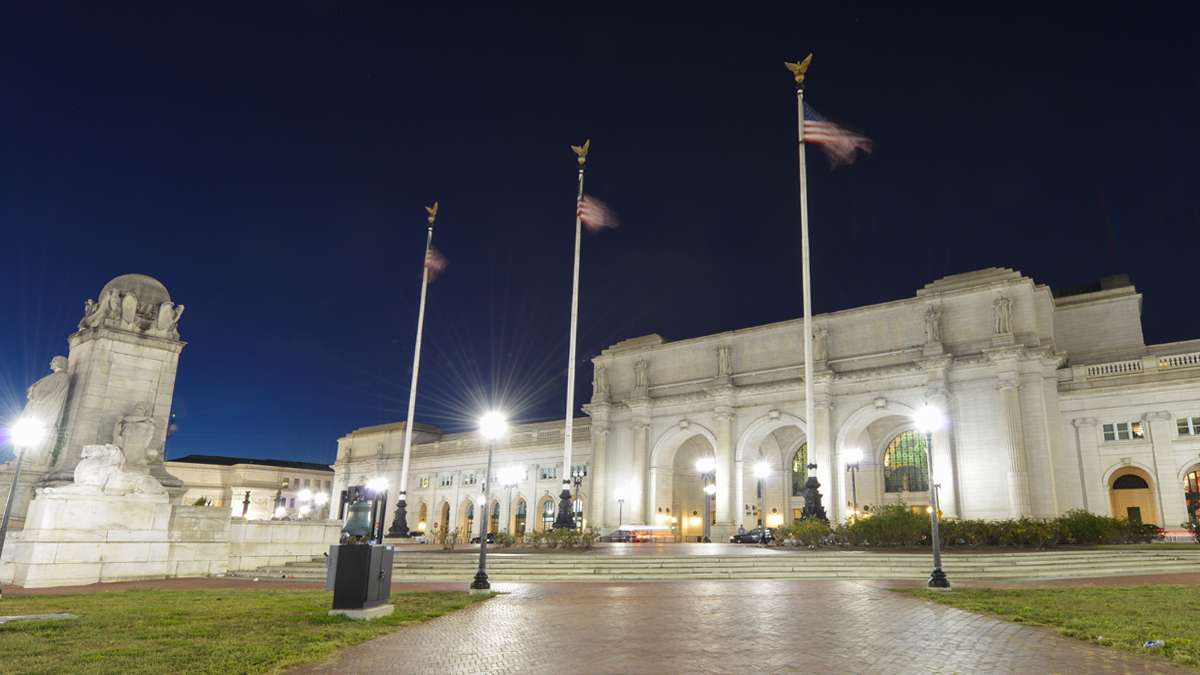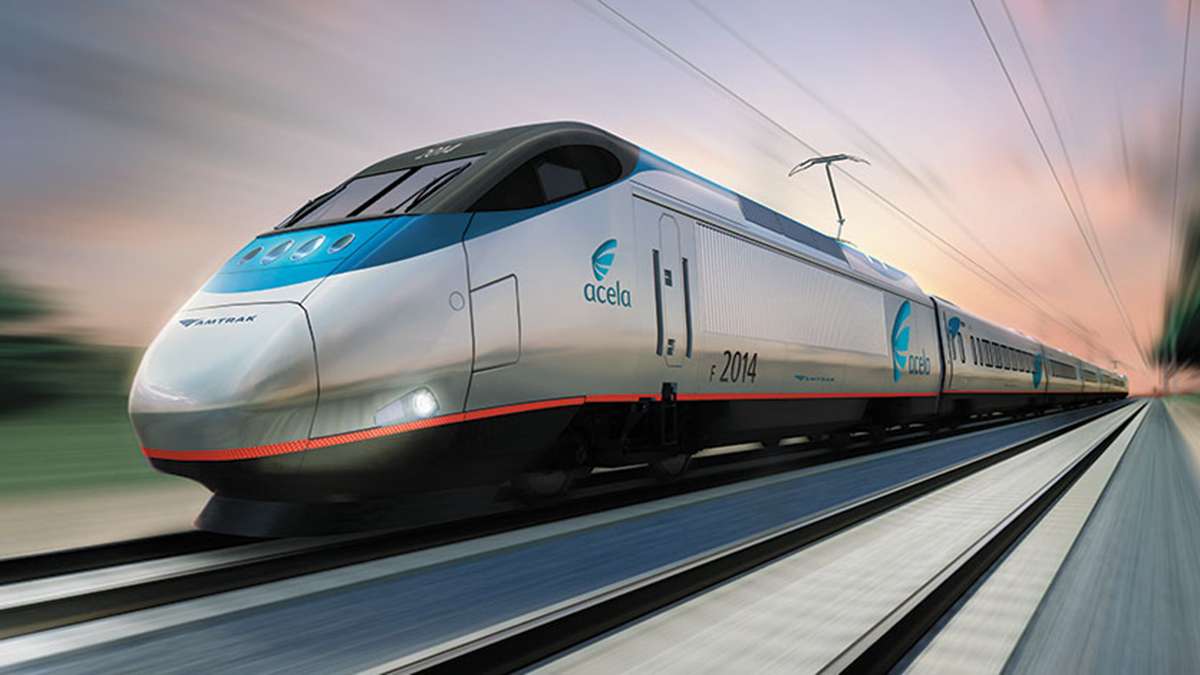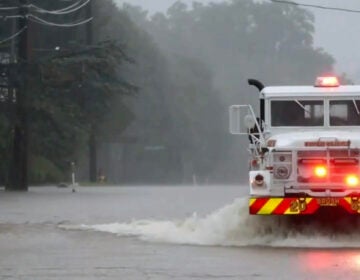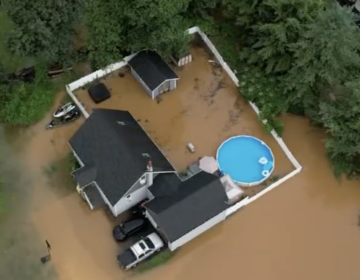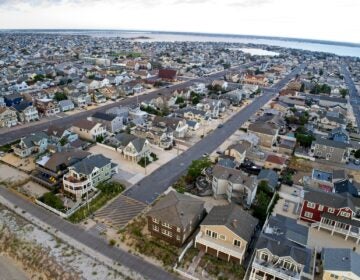Passenger train service on America’s Northeast Corridor could get a lot faster
By 2040, your trips to Washington, D.C., New York and Boston may be getting faster. How much faster, exactly, depends on which of three plans that the Federal Railroad Administration approves.
The FRA held a meeting for public comment on drafts of potential plans for maintaining or improving Northeast Corridor rail service – the route between Washington D.C. and Boston – Monday at SEPTA’s headquarters in Center City Philadelphia. There are three potential plans, ranging from slight tweaks along the corridor to reduce choke points to major overhauls of infrastructure and routes that could accommodate high-speed rail.
Transform
The most ambitious – and expensive, estimated to cost between $267-$308 billion dollars – of the plans calls for digging a tunnel underneath Center City and opening a new station in Market East section. This would allow high-speed trains to service the city – a daunting task for 30th Street Station because of the horseshoe-shaped curves approaching the station from the north and south, which cause trains to slow considerably.
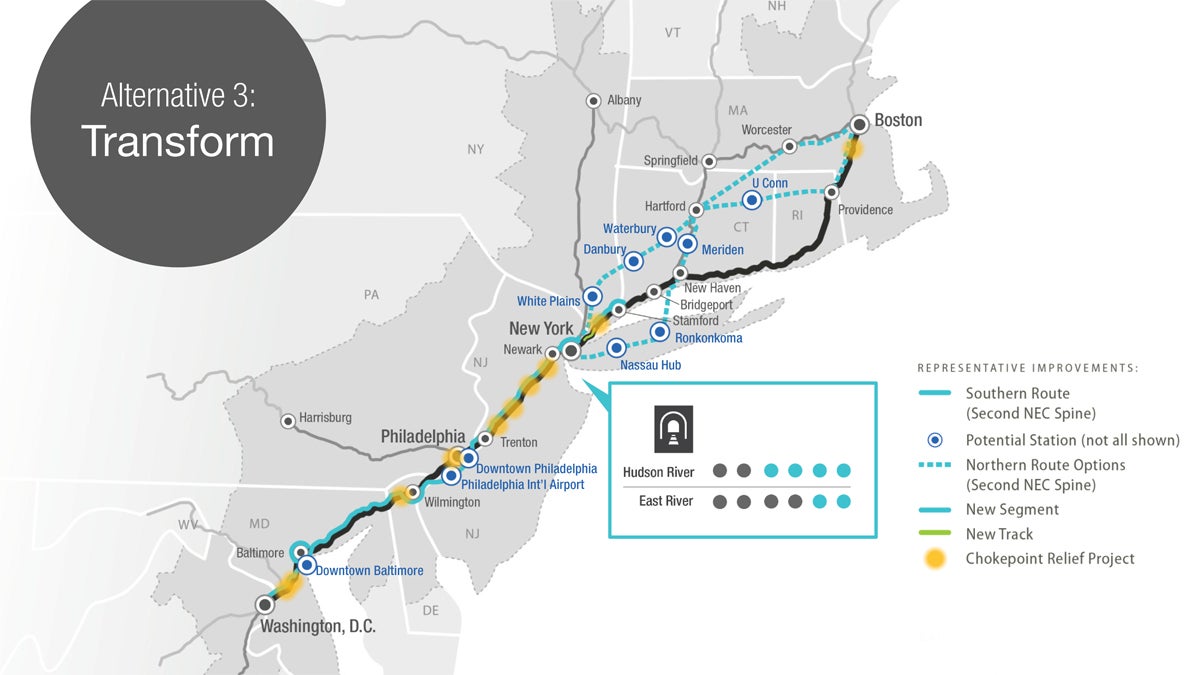
If implemented, a trip from Boston to D.C. would be reduced from 6 hours, 30 minutes to 3 hours, according to the FRA. Currently that trip on an Amtrak’s Acela train takes about six and a half hours. The plan also calls for a new station to be built for the Philadelphia International Airport, which would give Amtrak passengers a direct connection.
Throughout the entire Northeast Corridor, this plan – dubbed “Transform”– calls for a “spine” of parallel tracks that would be built from D.C. to New York City, greatly increasing the number of riders that the corridor’s rail could serve. From New York City to Boston, several new routes would be considered through New England and Long Island.
This costly plan drew the most criticism from commenters.
“This Philadelphia tunnel is something we don’t need,” says Scott Maitz a local transportation activist. Instead, it’s better to continuing to run trains through 30th Street because that’s where downtown Philly is expanding, he says, citing recent investments made in the area as that neighborhood grows.
Michael Noda, author of the Sic Transit Philadelphia transit blog, went further and decried the cost of the whole plan, including the tunnel beneath Center City. “We cannot be committing ourselves to spend twice as much as the Japanese are spending on maglev between Tokyo and Nagoya on a vision of high speed rail that only reaches between Boston and Washington [D.C.].”
The two other plans – dubbed the “Maintain” and “Grow” options – are less transformative for Philadelphia, but would still save travelers time along the whole corridor by reducing bottlenecks along the route, as well as by increasing capacity for new riders and helping to make the system more resilient to climate change.
Maintain
The most basic plan – “Maintain” – includes a few big projects, none of them in Philadelphia: new tunnels under Baltimore and between New Jersey and New York, as well as some new tracks through Connecticut and Rhode Island. Several smaller tweaks along the route would make the trip from D.C. to Boston around 35 minutes shorter.
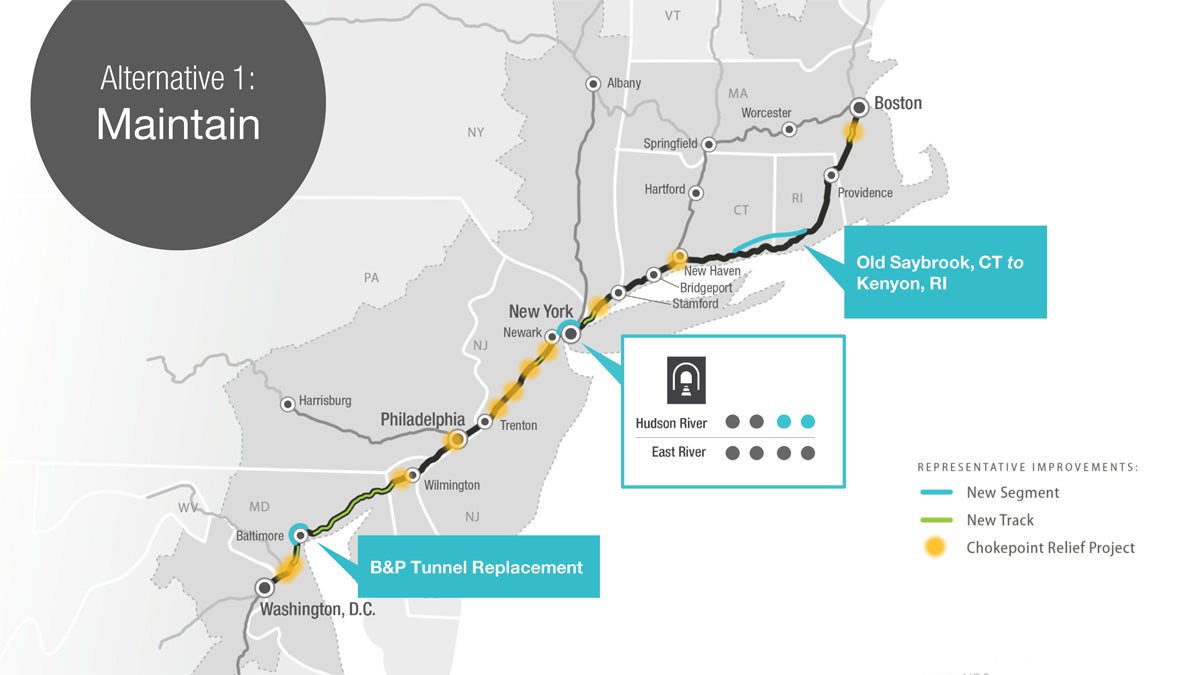
Grow
The second plan – “Grow” – would slightly straighten the tracks north of 30th Street Station and in North Philadelphia. This plan, like “Transform” above, also adds a stop for the airport on a new segment of track south of the city. Travel time between D.C. and Boston would be reduced by an hour and five minutes.
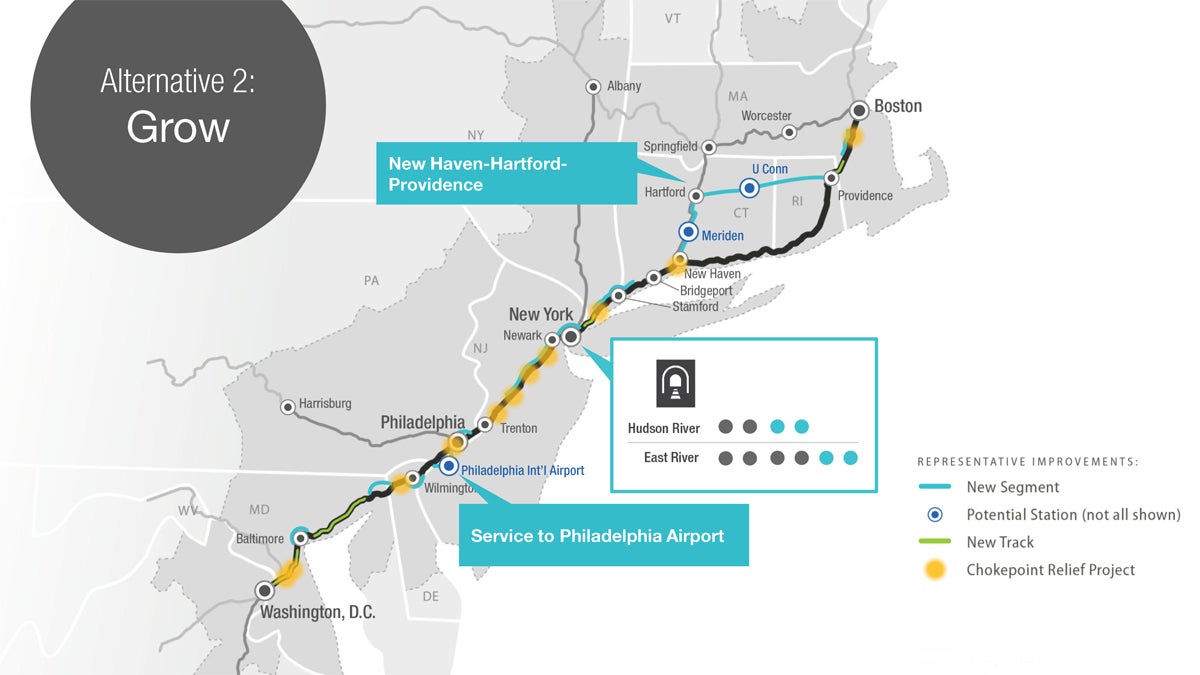
All of these plans are compared against a baseline plan, in which no new action is taken and the infrastructure is maintained but not improved. That means relying on century-old infrastructure in some places – most famously, the 100-year-old tunnels between New York City and New Jersey under the Hudson River that were damaged by Superstorm Sandy and whose partial failure this past summer caused a nightmare for commuters in North Jersey and New York. This plan, called the “no action” plan, would not increase the corridor’s ability to keep up with expected population growth in cities along the route, the FRA said.
But these three plans are not all or nothing, FRA officials said. Elements of each can be swapped or combined with each other based on further analysis, comments received, and other considerations. The FRA will announce their final preferred plan this spring. A final “service development plan,” which prioritizes a list of projects along the corridor, will be released in 2017. Construction on projects along the corridor may start anytime after that, though no specific timetable has been set.
Background
The Northeast Corridor carries 750,000 rail passengers per day and is the busiest rail corridor in the country. The Northeast Corridor alone contributes over $3 trillion to the economy each year, or about 21 percent of the nation’s GDP, according to the FRA’s report, making it a vital corridor for the entire country.
The meeting in Philadelphia was just one of 11 meetings that are taking place between Boston and D.C. The official comment period is open until January 30th, and can be given in person at a public meeting or online.
WHYY is your source for fact-based, in-depth journalism and information. As a nonprofit organization, we rely on financial support from readers like you. Please give today.





